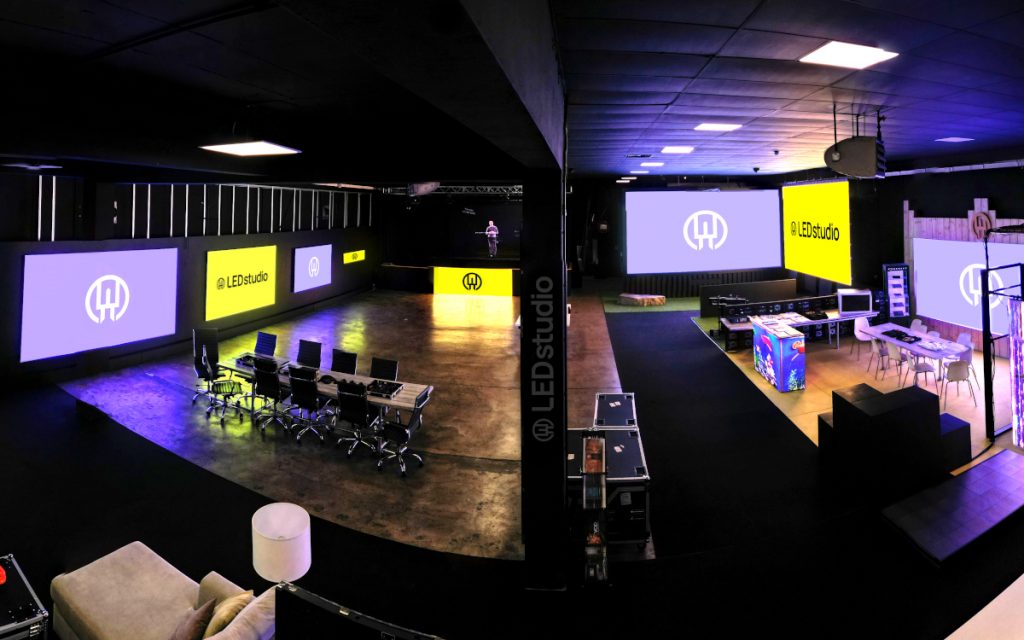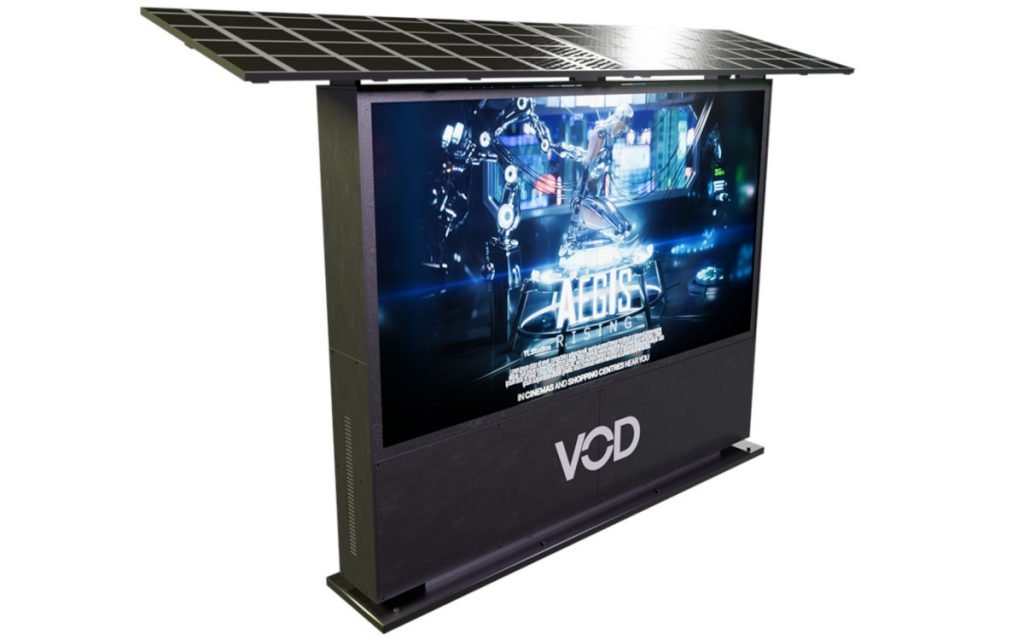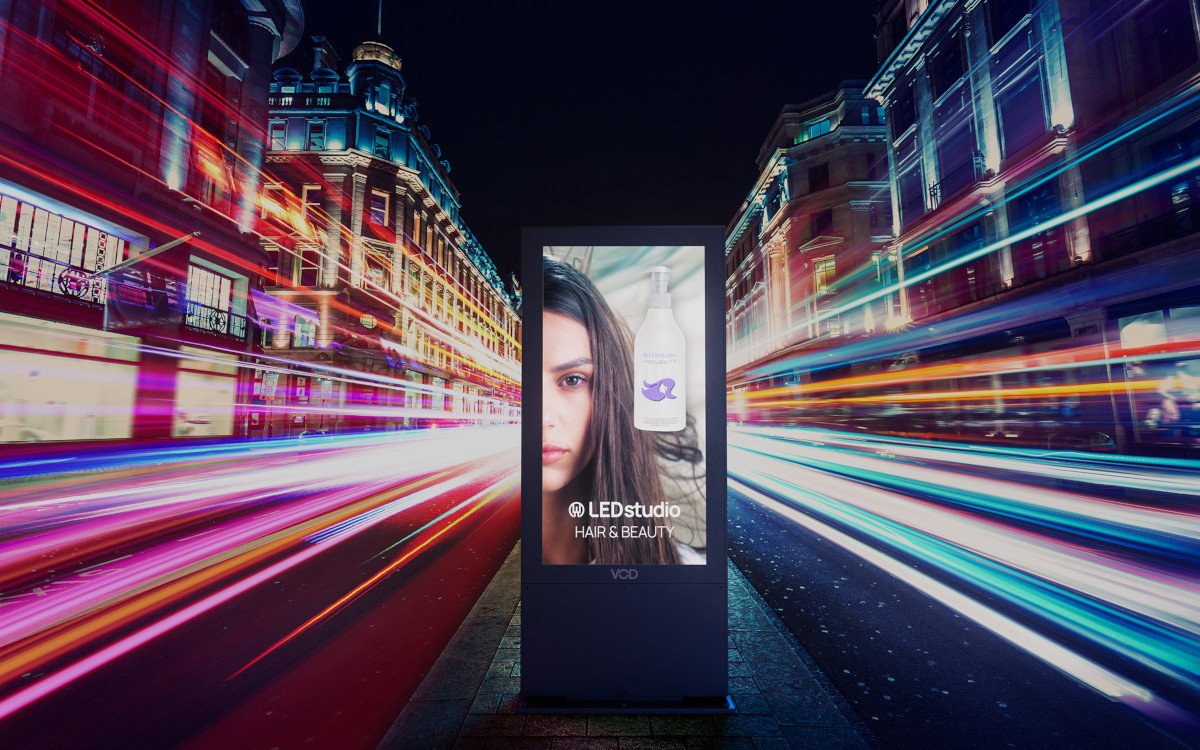The LED market is confusing, with a handful of well-known suppliers and hundreds of largely unknown vendors. The British-Chinese supplier LED-Studio is a typical hidden champion that positively surprises with innovative ideas, green signage and European management. An invidis background talk.
If you want to be successful in the LED market, you have to offer more than just hardware. So LED Studio is also much more than just an LED manufacturer. The 30-strong team is based north of London and in Cyprus and develops LED projects, manufactures hardware, installs the solutions on site and creates content. An LED end-to-end expert with its own manufacturing facility, so to speak.
LED Studio is committed to sustainability in the interests of European-end customers – invidis met with LED Studio to better understand what the English company with Chinese roots does better and more sustainably than other vendors on the market.
„Even if many in the market have never heard of LED Studio, most will already have come into contact with our solutions. After all, as an established white label LED manufacturer, we have been successfully established in the market for years,“ says Ross Noonan, Technical Sales & Marketing Manager in an invidis interview.

According to LED-Studio, the lack of experience and knowledge of end customers but also of integrators and technical planners is still one of the biggest challenges today. „LED tenders are often misspecified. While the focus is on pixel pitch and maximum brightness, power consumption has played virtually no role so far. Yet the right hardware with intelligent hardware concepts and intelligent content creation using lots of contrast can result in energy savings of 70% as well as great picture quality. Only with LED is black really black.“
Great demand for outdoor LED
Especially in the UK, out-of-home media owner and QSR restaurant chains are increasingly turning to high-resolution outdoor LED. With the Aegis product line, LED-Studio says it has struck a chord with the market. Double-sided LEDs with 4000 nits replace 85″ high-brightness LCD displays. According to LED-Studio, the LED solution has the advantage that only one technician is needed on site for repairs and replacement. In addition, the Aegis LED totems are said to be 60% cheaper to operate. After inhouse content testing and consultancy one of the major UK coffee brands with nationwide drive throughs is already switching from outdoor LCD to 1.2mm Flip Chip LED solutions.
Green Signage
LED-Studio provides a whole range of features that make LED solutions more sustainable. Some of the most important green signage levers for the manufacturer are:
Weight reduction and more efficiency
LED Studio uses its own Edge-range 43” & 55″ single die-cast cabinets, which are 30-40% lighter than comparable cabinets combined at the same size and use fewer internal components. This protects the environment both during transport from China to Europe and enables lighter and space-saving constructions on site. Compared to LCD video wall modules of the same size, LED Studio Cabinets are said to be 25% lighter and can be installed on existing LCD infrastructure like VESA brackets or directly onto the wall.

The LED Studio see themselves as pioneers of 43” and 55″ LED cabinets. The new LED form factor is becoming the standard in the market with the great advantage that one 55″ cabinet replaces four smaller cabinets. With only one instead of four power supplies, 55″ cabinets are considerably more efficient, according to LED-Studio. The Edge range also allows direct HDMI connectivity for 1080p display resolutions removing the extra scaling and screen processing power further reducing its complexity and carbon footprint.
Upgradeable by replacing the Pixel Card
Modern LED architecture enables a considerably longer service life. After five years of operation, the LED can be upgraded to a finer LED pixel pitch in a resource-saving way – ideally combined with a technology change from SMD to flip-chip. For this purpose, only the pixel cards need to be replaced; the cabinets with all other components can continue to be used.
Lower power consumption with flip chip LED technology
The change from SMD to flip chip technology enables power savings of up to 40% with comparable brightness. „We are not only technology pioneers but leaders in Total Cost of Ownership (TCO). We advise our customers from the beginning with a focus on TCO, because there is a difference in everyday life between what customers want and what they really need.“
Heat dissipation
The heat dissipation of Flip Chip LED (aka MicroLED) is considerably lower than that of SMD-based LED. While initial costs of Flip Chip are higher operation is considerably cheaper, not only because it is more energy efficient but also because its heat output is so much lower. They are also saving costs when it comes to cooling the space as well. Unintended heat generation is particularly unpleasant in walk-in, immersive experiences such as 360-degree LED installations. “New technology is all about education. Just because it costs more doesn’t mean you should avoid it.”
Eco-design
The sustainability of LED components includes not only energy-efficient components, power-saving operation and upgradeability, but also the minimisation of e-waste at the end of the life cycle. This includes an eco-design that enables easy recycling of cabinets and components at the end of their useful life. Different raw materials such as metals should be easily separable, plastic should be avoided as far as possible and components should be screwed instead of glued. According to LED-Studio, the latest product generation is 50% cheaper to recycle than previous models.

Hybrid LED with photovoltaic cells
The first hybrid outdoor high-bright Flip Chip LED Kiosk from LED-Studio, AEGIS Pro received an Innovation Award at the ISE in Barcelona. The flip-chip LED wall in landscape or portrait format has been equipped with PV cells and a battery. This allows the LED to be operated independently from the mains for 4-5 hours per day in Mediterranean locations. The integrated battery requires two hours for charging in sunny weather and then provides sufficient energy for 3.5 hours of LED running time in the evening hours. Over 24 hours, the hybrid solution offers energy savings of up to 38%, according to LED-Studio.
Of course, a few solar cells do not transform an outdoor LED into a climate-neutral advertising space. But a saving of more than a third is definitely more than just marketing.

